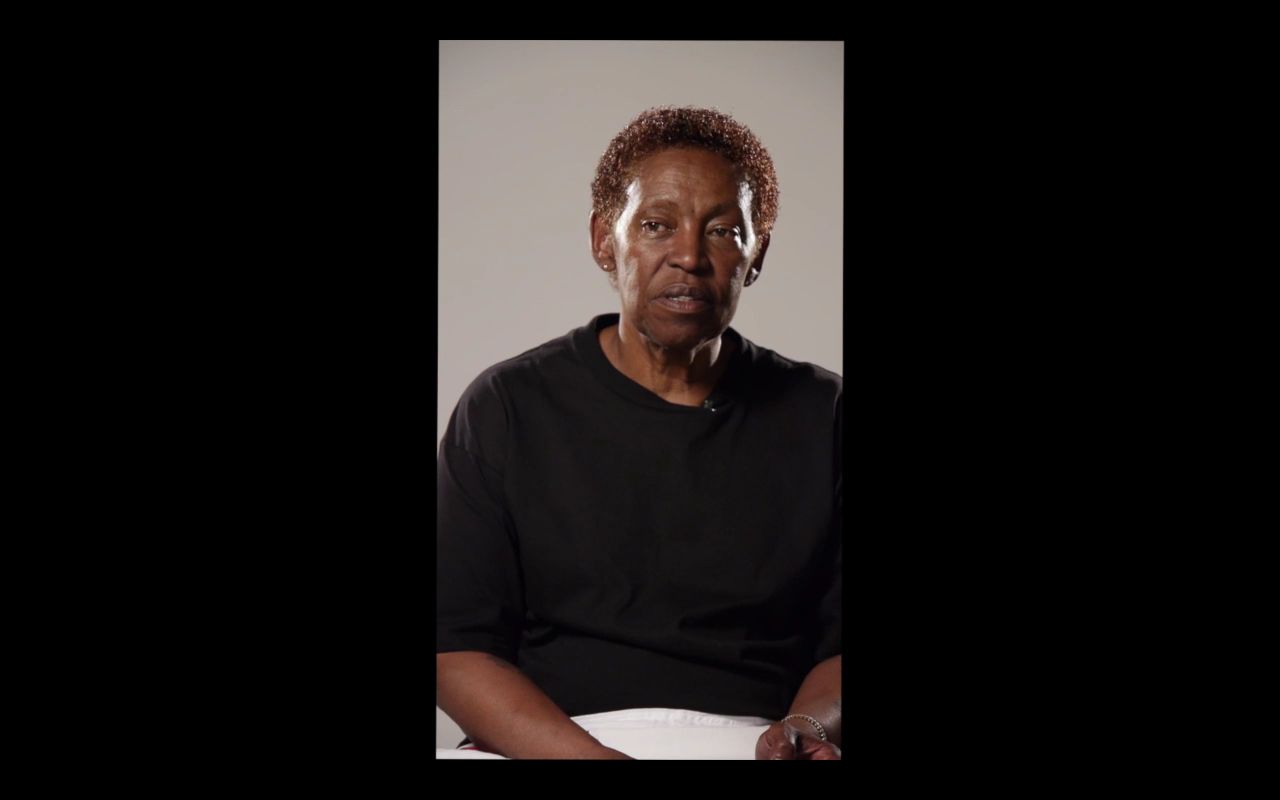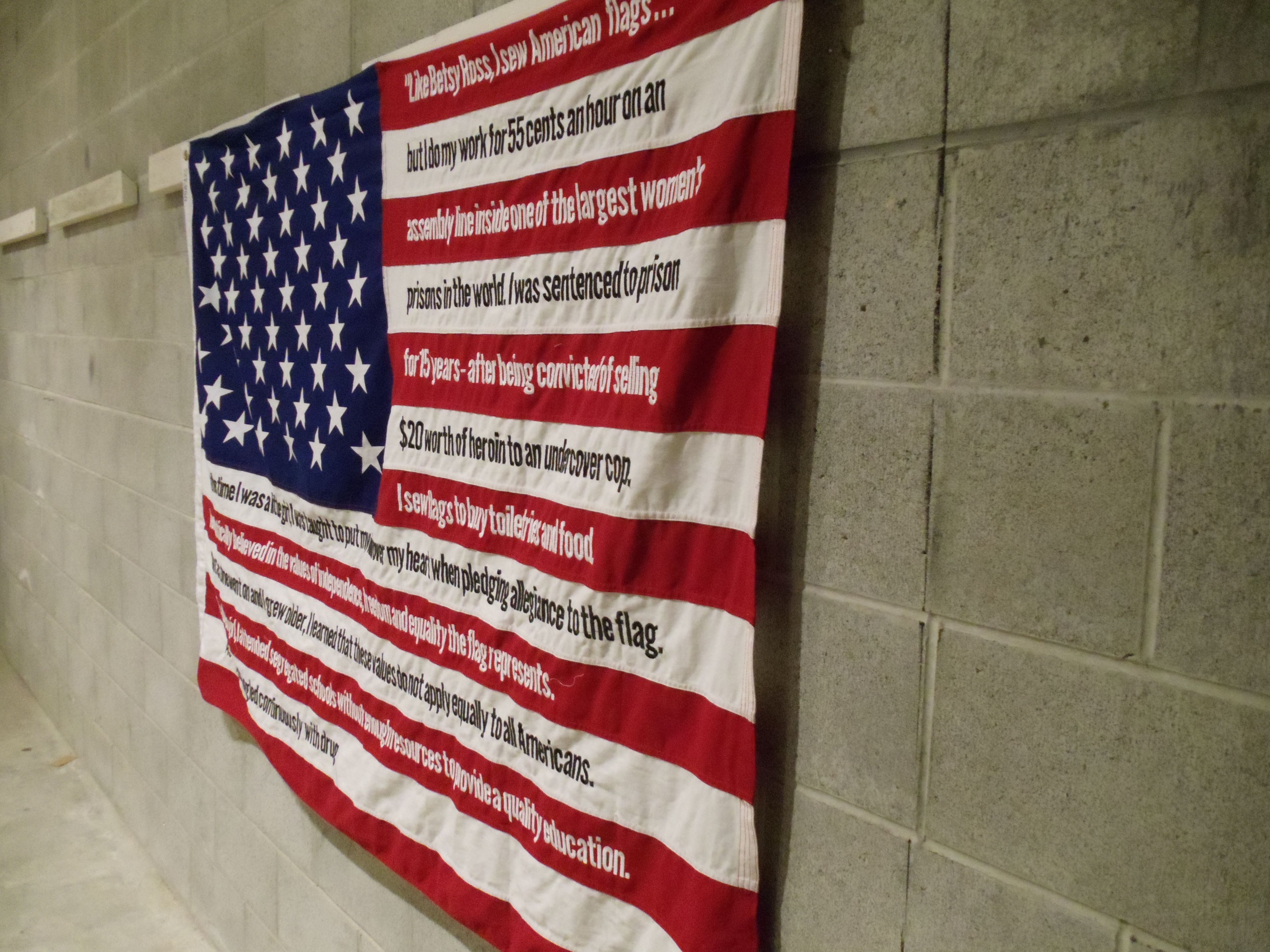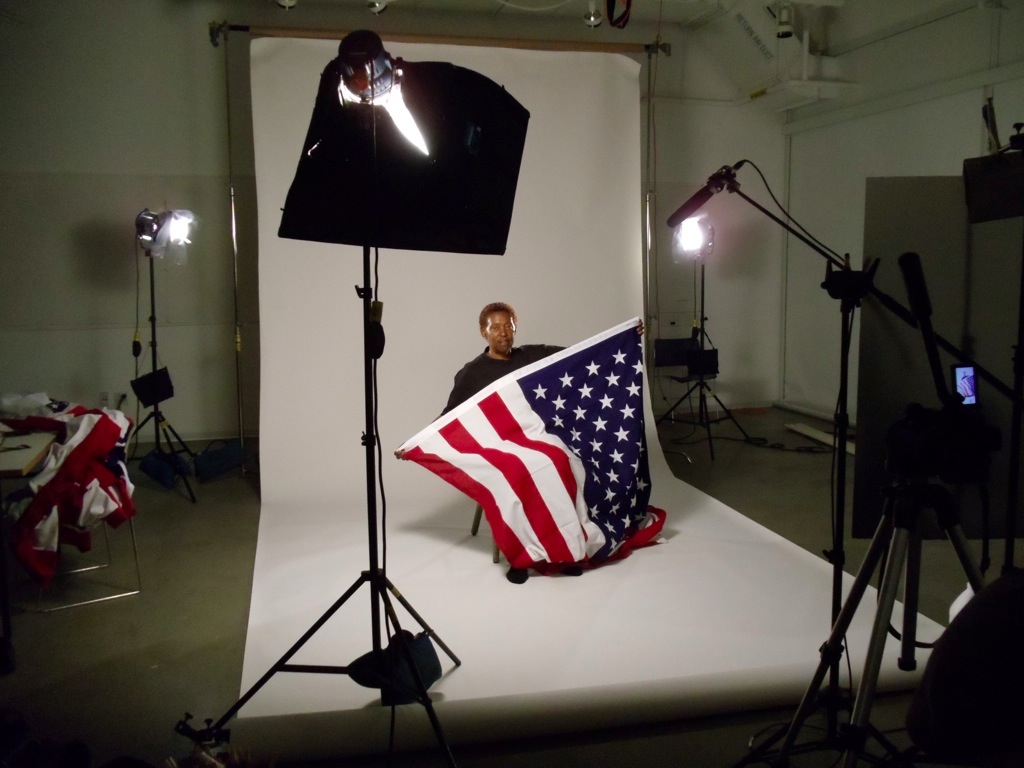"Like Betsy Ross" - Beverly

I met Beverly Henry at the Central California Women’s Facility [CCWF] in 2001. Over the years that I visited CCWF I recorded conversations with Beverly many times. Her voice is heard throughout Public Secrets and the history of her struggle with addiction, which she offered in a special interview conducted for Blood Sugar, is one of the most powerful accounts of the causal relations between poverty, addiction and incarceration I have heard. Beverly has spent 40 of her 61 years locked inside California state prisons. Like more than 70 percent of women in prison in California, she served all of this time for nonviolent, drug-related offenses. During one period of her incarceration Beverly worked for the Prison Industry authority in a textile factory that produces United States and California State flags. On the 254th anniversary of Betsy Ross’s birth Beverly wrote:
Like Betsy Ross, I sew American flags. But I do my work for 65 cents an hour in an assembly line inside the Central California Women's Facility, the largest female correctional facility in the world. I was sentenced to prison for 15 years after being convicted of selling $20 worth of heroin to an undercover cop. I sew flags to buy toiletries and food. From the time I was a little girl, I was taught to put my hand over my heart when pledging allegiance to the flag. I emphatically believed in the values of independence, freedom and equality the flag represents. But as time went on and I grew older, I learned that these values do not apply equally to all Americans. As a black girl, I attended segregated schools without enough resources to provide a quality education. As an adult, I struggled continuously with drug addiction, but there were no resources available for me to get help. Instead, I was sent to prison. America has become a country that imprisons those it fails, blaming poverty, drug addiction or homelessness on individuals rather than recognizing and addressing the conditions that give rise to them. Betsy Ross sewed a flag that represented a vision of an equal and just society. But to honor this flag we must resolve to make America a country where all people can thrive.Beverly Henry
Beverly is un-represented in the symbolic order depicted by the flag she sews. Her reflections on the promise of life, liberty and the pursuit of happiness that our flag represents, challenge us to examine the structural inequalities at the root of our extraordinary expansion of penal confinement. The incongruity and terrible irony of the existence of the flag factory at CCWF, together with Beverly's reflections on the contrast between her own life experience, the mythology around the figure of Betsy Ross, and the notions of life, liberty and the pursuit of happiness that the flag purportedly represents, provide a powerful critique of the structural inequalities that the Prison Industrial Complex exploits and expands.
 When I read Beverly’s “Betsy Ross” text my first impulse was to see it inscribed into the fabric of every US flag produced at the prison. Then I realized that, because I work for the state as a professor at the University of California, I am allowed to purchase goods from the Prison industry Authority (which only sells to state agencies) and, thus, have the opportunity to implement this concept as a way of bringing public attention to Beverly’s experience. My first “shopping” trip to the California PIA online catalogue, revealed a vast prison industry that spans forty-five facilities (prisons, camps, immigration detention centers and juvenile detention centers) and produces everything from milk to medical uniforms, to the cages that imprison the “workers” themselves. Together, this “shopping” trip and the eloquence of Beverly’s text inspired the design for a new work titled Undoing Time – a new media documentary will include an installation of items produced in California Prison factories inscribed with quotes taken from interviews in which incarcerated men and women describe what it means to “do time” in California State Prisons.
When I read Beverly’s “Betsy Ross” text my first impulse was to see it inscribed into the fabric of every US flag produced at the prison. Then I realized that, because I work for the state as a professor at the University of California, I am allowed to purchase goods from the Prison industry Authority (which only sells to state agencies) and, thus, have the opportunity to implement this concept as a way of bringing public attention to Beverly’s experience. My first “shopping” trip to the California PIA online catalogue, revealed a vast prison industry that spans forty-five facilities (prisons, camps, immigration detention centers and juvenile detention centers) and produces everything from milk to medical uniforms, to the cages that imprison the “workers” themselves. Together, this “shopping” trip and the eloquence of Beverly’s text inspired the design for a new work titled Undoing Time – a new media documentary will include an installation of items produced in California Prison factories inscribed with quotes taken from interviews in which incarcerated men and women describe what it means to “do time” in California State Prisons.For the museum installation: Beverly’s “Betsy Ross” text will be industrially embroidered into the stripes of US flags produced in the CCWF flag factory, a prisoner’s statement about medical treatment in the prison will be imprinted on a medical technician’s jacket. Fragments from prisoner’s stories about prison conditions and prisoner’s long histories of incarceration will be etched into steel mirrors and stitched into the mattresses used in their cells. Four of the 20 prison products in the installation will be accompanied by a video, in which a formerly incarcerated man or woman will describe the methods required for its production, how its making is part of “doing time,” and how its meaning or function in a larger social context is “undone” by its origins within the prison.

Beverly Henry is now free. She was paroled in 2009. Last year I had the pleasure of spending a day with Beverly in Los Angeles. We recorded her speaking about her experience inside prison and the difficulty of reintegration into society upon her release while un-doing the stitches and ripping out the seams of US flag that was sewn at the flag factory at CCWF.
| Previous page on path | Interlocutory Relations, page 3 of 3 | Path end, continue |
Discussion of "'Like Betsy Ross' - Beverly"
Add your voice to this discussion.
Checking your signed in status ...